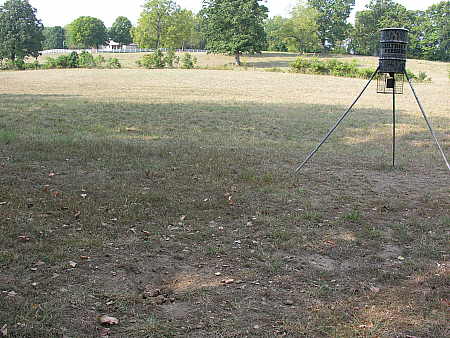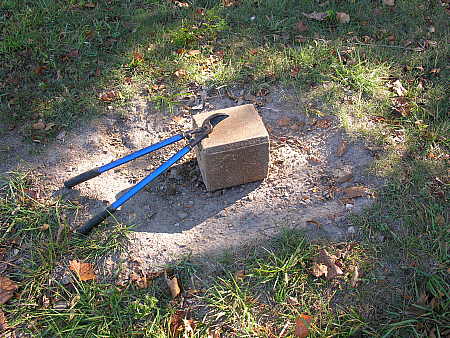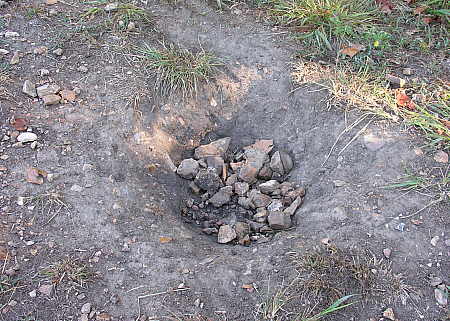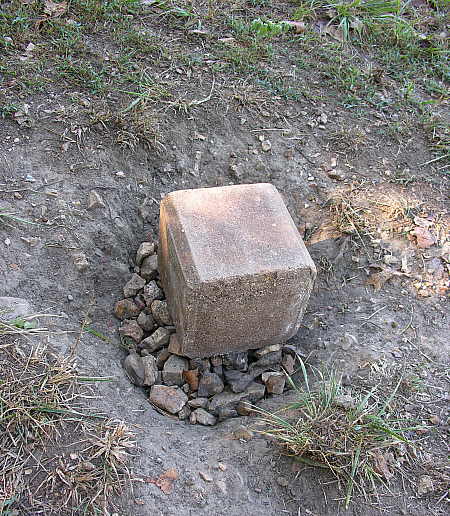If you have been following this blog you might recall the following photograph from a previous post entitled Another Day In The Ozarks…Not!, which chronicled one of the many wildfires we have experienced on our property. As I was frantically searching for the source of smoke emanating from somewhere on our land, I was impeded in my progress along one of our fire trails by a tree which had fallen as a result of a lightning strike.
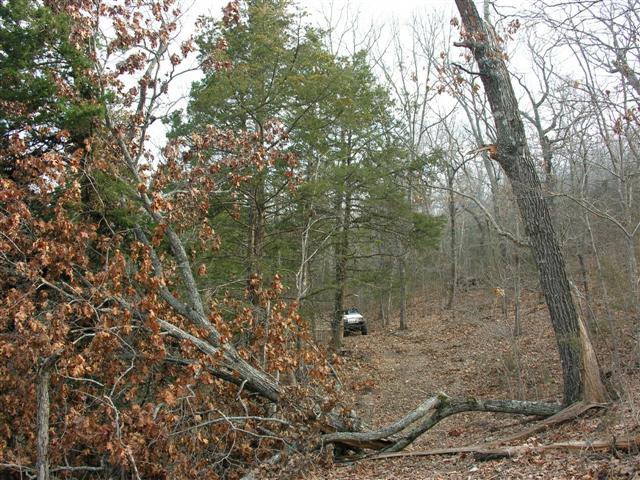
Not long after that incident, but before I had a chance to muster up the chain saw to cut up and remove the fallen tree seen above, we were unfortunate enough to experience yet another fire on our property. The photograph that follows may also look familiar to you, as it is from a previous post entitled To Quote Yogi Berra “It Feels Like Deja Vu All Over Again”, in which I recounted another in our series of fires. This second photograph was taken after the second fire burned through the area where the fallen tree had lain, and you can see that the fire succeeded in burning up any trace of the tree.

Today Retta and I took our dogs walking, and we decided to stroll along the same trail that is shown in the pictures above. When we arrived at the location where the former tree had previously fallen, and than been consumed by flames, we were greeted by the sight of another, larger tree blocking our fire lane. The following photograph shows this second fallen tree, which you will notice is located right next to the remains of the lightning-struck tree trunk from the earlier incident (which is on the left in this photo, as we approached the tree from the opposite direction as in the first two photos).
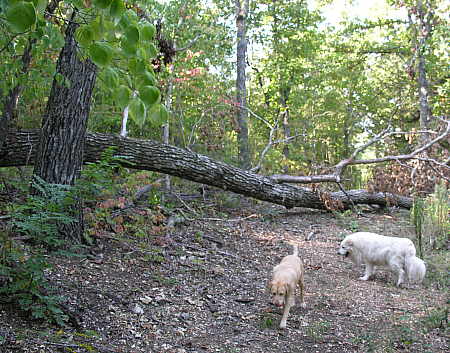
My first thought when I saw the downed tree was to wonder if lightning caused the destruction. Could lightning really strike the same place twice? It would be quite a coincidence if two adjacent trees were downed by lightning in the span of 7 months. The second thought to enter my mind was, darn, that’s going to be a big job cutting up and removing that tree from our fire lane.
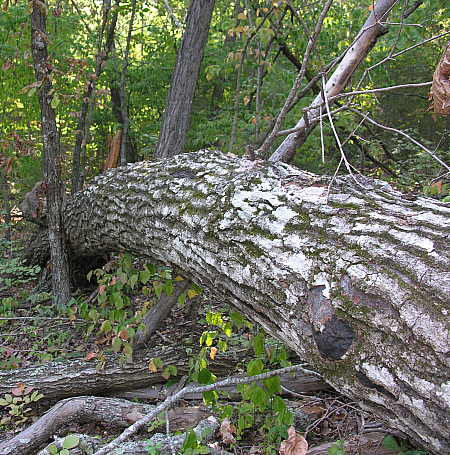
The trunk is probably over 24″ in diameter at the point where it crosses over the fire lane. While I am not inexperienced in the use of a chain saw (I usually have the local farm store sharpen about 30 chains for me each season), I am no Paul Bunyan either. I thought that this particular tree might be too large a job to tackle by myself, so maybe I would recruit (or hire) someone more experienced than myself to undertake this job.
As I scrambled up the slope to get a closer view of the tree, the cause of it’s demise became apparent.
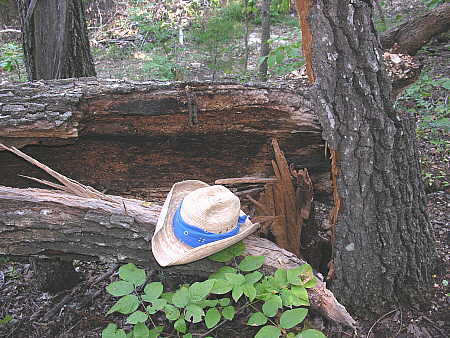
From the opposite side of the tree you can see that this tree was hollow. Not dead, as there were fully leafed branches, but severely weakened by the structure of it’s hollow trunk. It was probably knocked over recently by gusty wind conditions that often accompany the frequent thunderstorms that spawn in the Ozarks. So now I am not certain if I will hire someone or not. If I can determine that the trunk is hollow at the points that I would have to cut it for removal, than I will go ahead and do it myself, otherwise, I’ll start looking for help.



